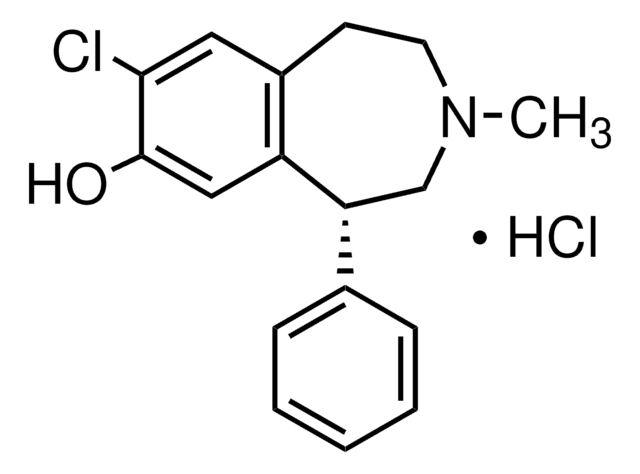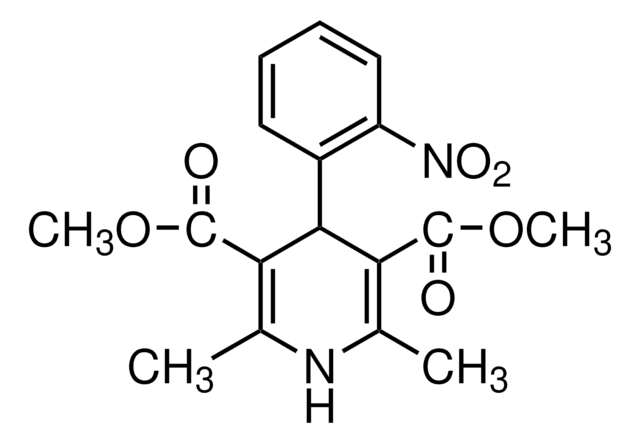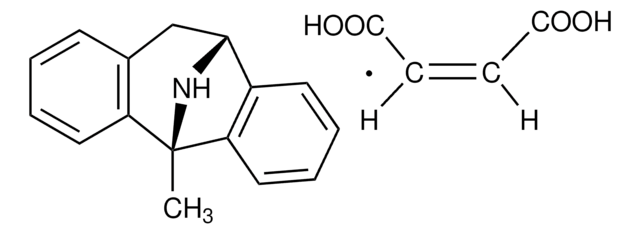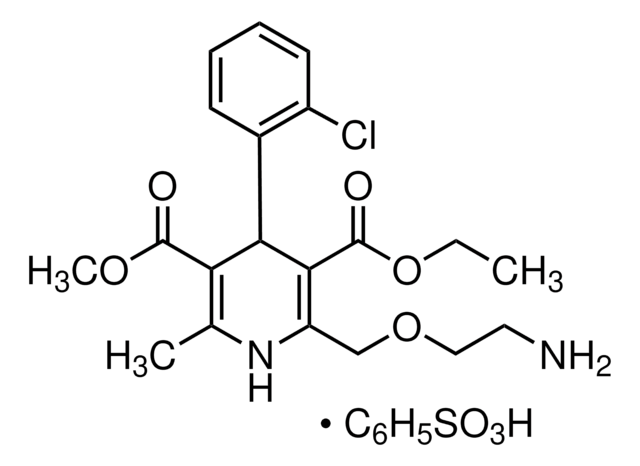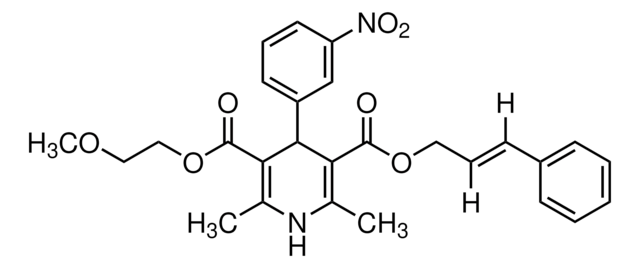SML2591
SCH-39166 hydrobromide
≥98% (HPLC)
Synonym(s):
(-)-trans-6,7,7a,8,9,13b-Hexahydro-3-chloro-2-hydroxy-N-methyl- 5H-benzo[d]naptho-(2,1-b)azepine hydrobromide, (6aS,13bR)-11-Chloro-6,6a,7,8,9,13b-hexahydro-7-methyl-5H-benzo[d]naphth[2,1-b]azepin-12-ol hydrobromide, (6aS-trans)-11-Chloro-6,6a,7,8,9,13b-hexahydro-7-methyl-5H-Benzo[d]naphth[2,1-b]azepin-12-ol hydrobromide, Ecopipam hydrobromide, PSYRX 101 hydrobromide, PSYRX-101 hydrobromide, PSYRX101 hydrobromide, SCH 39166 hydrobromide, SCH39166 hydrobromide
About This Item
Recommended Products
Assay
≥98% (HPLC)
form
powder
storage condition
desiccated
color
white to beige
solubility
DMSO: 2 mg/mL, clear
storage temp.
2-8°C
Biochem/physiol Actions
Choose from one of the most recent versions:
Certificates of Analysis (COA)
Sorry, we don't have COAs for this product available online at this time.
If you need assistance, please contact Customer Support.
Already Own This Product?
Find documentation for the products that you have recently purchased in the Document Library.
Our team of scientists has experience in all areas of research including Life Science, Material Science, Chemical Synthesis, Chromatography, Analytical and many others.
Contact Technical Service